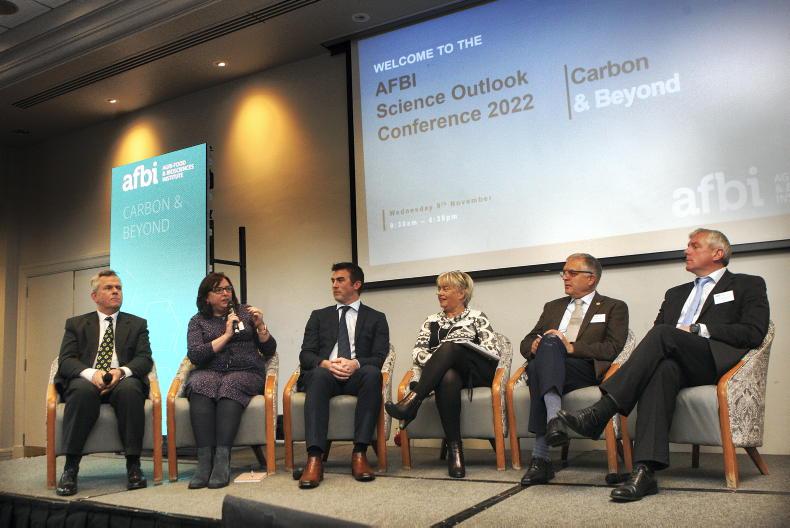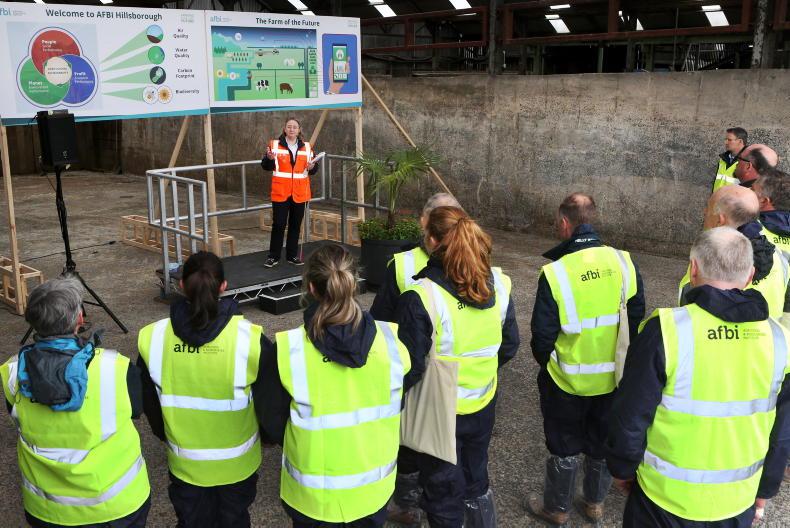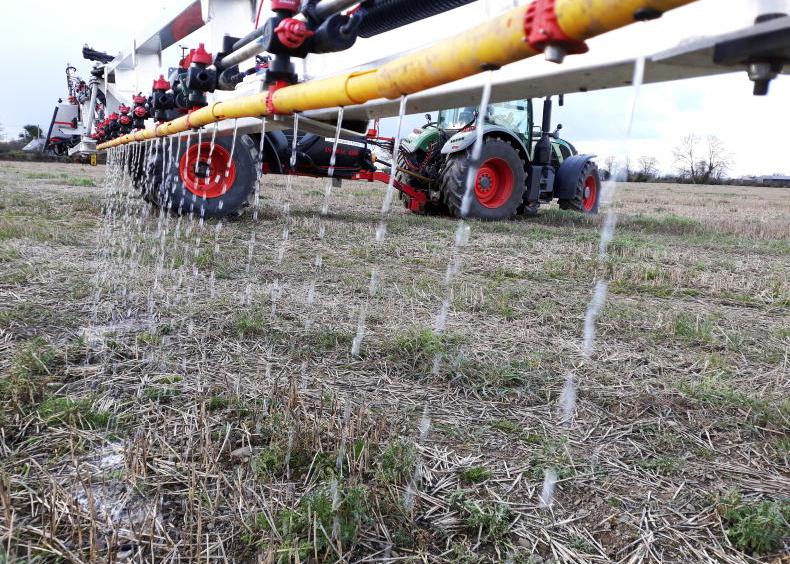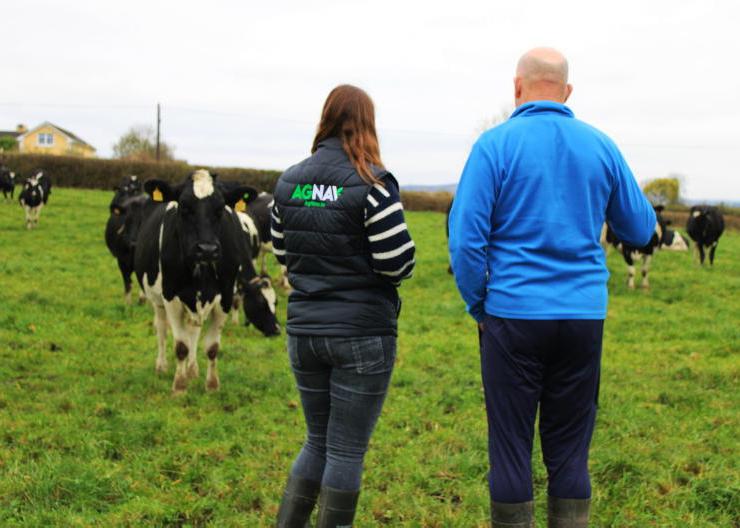Initial trial work on potential feed additives that cut methane emissions from ruminant animals is promising, but there are still challenges to be overcome that will require international effort, a leading research scientist has suggested.
Addressing the AFBI Outlook Conference last Wednesday, Professor Sinéad Waters from Teagasc outlined studies under way to assess various feed additives including seaweed, plant oils, halides and 3-NOP (sold under the brand, Bovaer).
The aim with all these additives is to reduce methane released during ruminant digestion. Under current accounting systems, methane from ruminants is responsible for around 60% of all greenhouse gas (GHG) emissions from Irish agriculture.
Waters outlined new work at Teagasc Grange where dairy x beef cattle were fed Bovaer. Preliminary results showed that methane was consistently reduced by 25 to 30%, without any negative impacts on intake or liveweight gain. The results for seaweed extracts show methane reductions of up to 10%, with linseed oil at around 20%.
However, methane inhibitors must be continually fed, potentially limiting their use in grazing systems, acknowledged Waters. “We need to develop new formulations for extensive grazing application,” she suggested.
New work is looking at feeding inhibitors twice per day via a pellet, with trials also ongoing to incorporate inhibitors into a slow-release rumen bolus.
The other option is early life intervention. “The first month of life presents a timeframe when the rumen microbiome becomes established. This period of time is critical,” said Waters. French work has shown that an oral dose of dairy calves with 3-NOP did result in reduced methane emissions which persisted to 12 months of age. “We are hoping to replicate some of these studies,” she added.
However, if farmers are going to adopt methane inhibitors (especially where there is a cost) she maintained there would have to be a co-benefit in terms of increased animal performance
“To date there isn’t sufficient evidence to show that,” acknowledged Waters.
Researcher cautious on multispecies swards
It is still too early to encourage widespread adoption of multispecies swards (MSS) across NI farms, AFBI researcher Dr David Patterson told attendees at last Wednesday’s event.
During his presentation, Patterson said there was a need to “firmly establish” what mixtures of legumes and herbs in a MSS will best deliver reduced greenhouse gas (GHG) emissions. There are also issues to be resolved around persistency of the swards on farms, the risk of bloat in grazing animals, the benefits to soil health and impact on water quality.
Despite that caution, Patterson said initial work at AFBI Hillsborough does suggest a MSS will outperform a ryegrass-only sward in terms of yield, with the clovers and herbs tending to grow strongly from midsummer onwards when grass growth declines.
The MSS also has much deeper rooting structures and higher earthworm populations, while the performance of a group of dairy-beef crosses was similar on the MSS when compared to a high-quality grass clover sward.
Longer term, Patterson believes there are also opportunities to integrate trees into grazing situations, with the work on agroforestry at AFBI Loughgall showing significant increases in carbon captured within the soil, as well as that carbon in the trees.
“Increasing species diversity using legumes, herbs and trees in our pastoral farming systems – it has the potential to deliver significant benefit for carbon and also can go beyond in terms of enhancing the natural environment in which we farm,” concluded Patterson.
Opportunity to breed
for lower methane
Selecting cattle that have lower methane emissions is something that can be built into genetic traits, confirmed Dr Steven Morrison from AFBI.
“With methane emissions, we are seeing heritabilities in around 15 to 35%, so it is something we can target,” said Morrison.
He pointed out that genetic gains are cumulative and permanent, adding that there is some work to show if the industry breeds for methane reduction it could reduce resultant emission intensity of the gas by 24% by 2050.
“With the new technologies that keep coming on stream in terms of genetic evolution and genetic developments, I think that 24% can be increased further,” suggested Morrison.
He highlighted the importance of having data, especially measurements relating to the methane emissions of individual animals, to identify those with superior traits.
Three cornerstones to good disease control
There are many benefits that result from minimising diseases on farm, including improved efficiency, higher returns, less antibiotic use and a lower impact of animal agriculture on the environment, maintained AFBI Stormont vet Dr Barry McInerney.
He outlined three cornerstones of good disease control on farms. The first is having a robust animal health plan which is reviewed on a regular basis. The second is improved biosecurity that involves the likes of isolating newly brought-in animals and disinfection of buildings and equipment. The third cornerstone is vaccination, which he said must not be a substitute for poor husbandry on the farm.
McInerney also highlighted the main causes of death found at post-mortem at the two AFBI facilities in Omagh and Stormont. In total around 2,500 submissions are received each year, of which around 55% are cattle, 30% are sheep, with the rest mainly poultry and pigs.
The main issues in young calves are related to scour (rotavirus and cryptospirodium). Post-mortem analysis in older calves and weanlings identifies pneumonia as the main cause of death, although in weanlings, parasitic pneumonia due to lungworm made up 23% of cases. In a further 14.3% of weanling cases, clostridial disease was responsible for death, despite effective vaccines being available, said McInerney.
In adult cattle he said that parasitic pneumonia is “an emerging problem”, while for lambs, the main cause of death was excessive worm burdens.
“Many of these diseases can be controlled at farm level,” said McInerney, who also emphasised the importance of getting colostrum into newborn animals. Of the calves sent for post-mortem to AFBI, 47% had inadequate colostrum intake.
DAERA chief wants ministers back
In her opening remarks at the AFBI conference, DAERA permanent secretary Katrina Godfrey said she hoped it won’t be too long before ministers are back in place at Stormont leading and directing the work of Departments.
“It cannot be right that in a partnership which is reliant on both the role of the minister and of the civil servant – it feels very odd when one of those partners is missing,” said Godfrey.
She highlighted a number of issues that lie ahead, which include meeting the target for net zero greenhouse gas (GHG) emissions by 2050. When compared to 1990, NI has an interim 2030 target to cut emissions by 48%. “That is a huge challenge, particularly when you consider that over the 30 years to 2020 GHG emissions here reduced by just 24%,” said Godfrey.
The first major task is to develop a NI climate action plan, which will demand new policies and programmes.
Read more
Climate targets won’t be easy - DAERA official
Changing the narrative about livestock farming
Initial trial work on potential feed additives that cut methane emissions from ruminant animals is promising, but there are still challenges to be overcome that will require international effort, a leading research scientist has suggested.
Addressing the AFBI Outlook Conference last Wednesday, Professor Sinéad Waters from Teagasc outlined studies under way to assess various feed additives including seaweed, plant oils, halides and 3-NOP (sold under the brand, Bovaer).
The aim with all these additives is to reduce methane released during ruminant digestion. Under current accounting systems, methane from ruminants is responsible for around 60% of all greenhouse gas (GHG) emissions from Irish agriculture.
Waters outlined new work at Teagasc Grange where dairy x beef cattle were fed Bovaer. Preliminary results showed that methane was consistently reduced by 25 to 30%, without any negative impacts on intake or liveweight gain. The results for seaweed extracts show methane reductions of up to 10%, with linseed oil at around 20%.
However, methane inhibitors must be continually fed, potentially limiting their use in grazing systems, acknowledged Waters. “We need to develop new formulations for extensive grazing application,” she suggested.
New work is looking at feeding inhibitors twice per day via a pellet, with trials also ongoing to incorporate inhibitors into a slow-release rumen bolus.
The other option is early life intervention. “The first month of life presents a timeframe when the rumen microbiome becomes established. This period of time is critical,” said Waters. French work has shown that an oral dose of dairy calves with 3-NOP did result in reduced methane emissions which persisted to 12 months of age. “We are hoping to replicate some of these studies,” she added.
However, if farmers are going to adopt methane inhibitors (especially where there is a cost) she maintained there would have to be a co-benefit in terms of increased animal performance
“To date there isn’t sufficient evidence to show that,” acknowledged Waters.
Researcher cautious on multispecies swards
It is still too early to encourage widespread adoption of multispecies swards (MSS) across NI farms, AFBI researcher Dr David Patterson told attendees at last Wednesday’s event.
During his presentation, Patterson said there was a need to “firmly establish” what mixtures of legumes and herbs in a MSS will best deliver reduced greenhouse gas (GHG) emissions. There are also issues to be resolved around persistency of the swards on farms, the risk of bloat in grazing animals, the benefits to soil health and impact on water quality.
Despite that caution, Patterson said initial work at AFBI Hillsborough does suggest a MSS will outperform a ryegrass-only sward in terms of yield, with the clovers and herbs tending to grow strongly from midsummer onwards when grass growth declines.
The MSS also has much deeper rooting structures and higher earthworm populations, while the performance of a group of dairy-beef crosses was similar on the MSS when compared to a high-quality grass clover sward.
Longer term, Patterson believes there are also opportunities to integrate trees into grazing situations, with the work on agroforestry at AFBI Loughgall showing significant increases in carbon captured within the soil, as well as that carbon in the trees.
“Increasing species diversity using legumes, herbs and trees in our pastoral farming systems – it has the potential to deliver significant benefit for carbon and also can go beyond in terms of enhancing the natural environment in which we farm,” concluded Patterson.
Opportunity to breed
for lower methane
Selecting cattle that have lower methane emissions is something that can be built into genetic traits, confirmed Dr Steven Morrison from AFBI.
“With methane emissions, we are seeing heritabilities in around 15 to 35%, so it is something we can target,” said Morrison.
He pointed out that genetic gains are cumulative and permanent, adding that there is some work to show if the industry breeds for methane reduction it could reduce resultant emission intensity of the gas by 24% by 2050.
“With the new technologies that keep coming on stream in terms of genetic evolution and genetic developments, I think that 24% can be increased further,” suggested Morrison.
He highlighted the importance of having data, especially measurements relating to the methane emissions of individual animals, to identify those with superior traits.
Three cornerstones to good disease control
There are many benefits that result from minimising diseases on farm, including improved efficiency, higher returns, less antibiotic use and a lower impact of animal agriculture on the environment, maintained AFBI Stormont vet Dr Barry McInerney.
He outlined three cornerstones of good disease control on farms. The first is having a robust animal health plan which is reviewed on a regular basis. The second is improved biosecurity that involves the likes of isolating newly brought-in animals and disinfection of buildings and equipment. The third cornerstone is vaccination, which he said must not be a substitute for poor husbandry on the farm.
McInerney also highlighted the main causes of death found at post-mortem at the two AFBI facilities in Omagh and Stormont. In total around 2,500 submissions are received each year, of which around 55% are cattle, 30% are sheep, with the rest mainly poultry and pigs.
The main issues in young calves are related to scour (rotavirus and cryptospirodium). Post-mortem analysis in older calves and weanlings identifies pneumonia as the main cause of death, although in weanlings, parasitic pneumonia due to lungworm made up 23% of cases. In a further 14.3% of weanling cases, clostridial disease was responsible for death, despite effective vaccines being available, said McInerney.
In adult cattle he said that parasitic pneumonia is “an emerging problem”, while for lambs, the main cause of death was excessive worm burdens.
“Many of these diseases can be controlled at farm level,” said McInerney, who also emphasised the importance of getting colostrum into newborn animals. Of the calves sent for post-mortem to AFBI, 47% had inadequate colostrum intake.
DAERA chief wants ministers back
In her opening remarks at the AFBI conference, DAERA permanent secretary Katrina Godfrey said she hoped it won’t be too long before ministers are back in place at Stormont leading and directing the work of Departments.
“It cannot be right that in a partnership which is reliant on both the role of the minister and of the civil servant – it feels very odd when one of those partners is missing,” said Godfrey.
She highlighted a number of issues that lie ahead, which include meeting the target for net zero greenhouse gas (GHG) emissions by 2050. When compared to 1990, NI has an interim 2030 target to cut emissions by 48%. “That is a huge challenge, particularly when you consider that over the 30 years to 2020 GHG emissions here reduced by just 24%,” said Godfrey.
The first major task is to develop a NI climate action plan, which will demand new policies and programmes.
Read more
Climate targets won’t be easy - DAERA official
Changing the narrative about livestock farming









SHARING OPTIONS